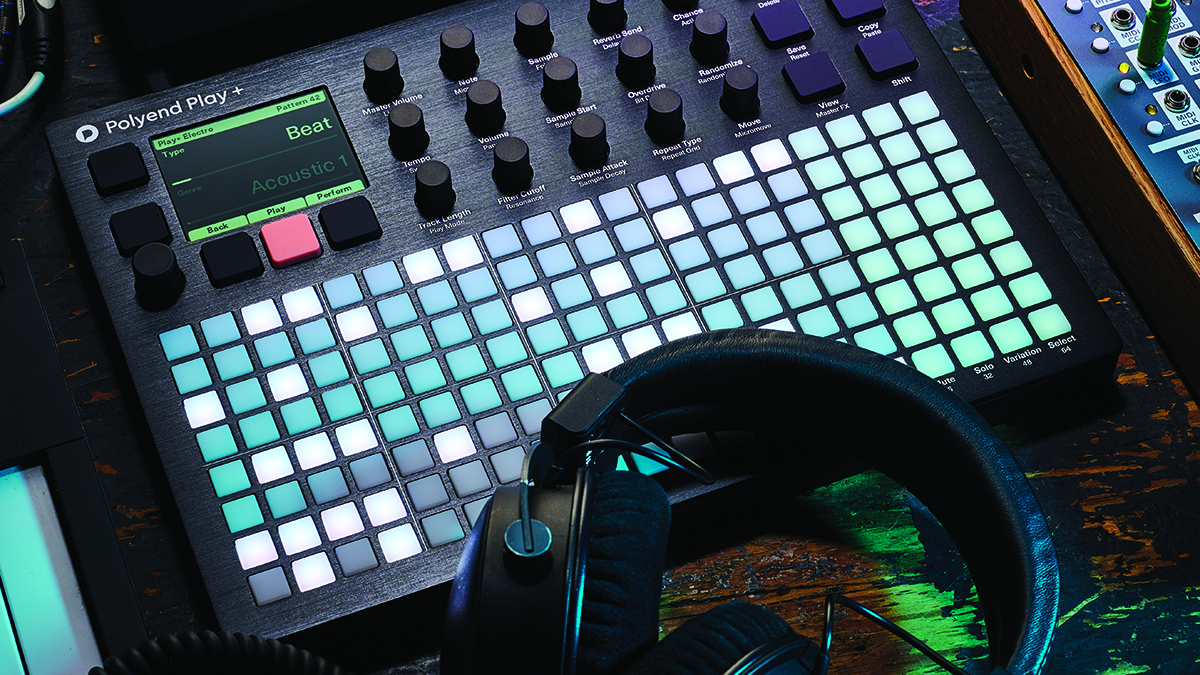
Polyend Play+: What is it?
Polyend released the original Play groovebox in spring 2022, adding to its lineup of distinctive instruments, including the Medusa synth, and the Tracker. The Play featured 16 tracks of sample playback and sequencing, with 35 different sequence play modes, automation, pattern chaining, and audio effects.
Now the Play+ brings an upgraded processor, stereo playback, multitimbral polyphonic synthesis, and USB audio. Interestingly, owners of the original Play can ship theirs back to Polyend for a hardware upgrade, which costs €399. The original Play will continue to be available, at a lower price.
Inside the box we find the Play+, a power supply (although other USB power supplies can be used), a 16GB Micro SD card with USB adaptor, stereo audio adaptor, mini-jack-to-MIDI DIN adaptor, registration card, stickers, and impressively, a printed 48-page Polyend Play+ Essentials introductory guide. There’s also a PDF version of that, and a full manual, available to download.
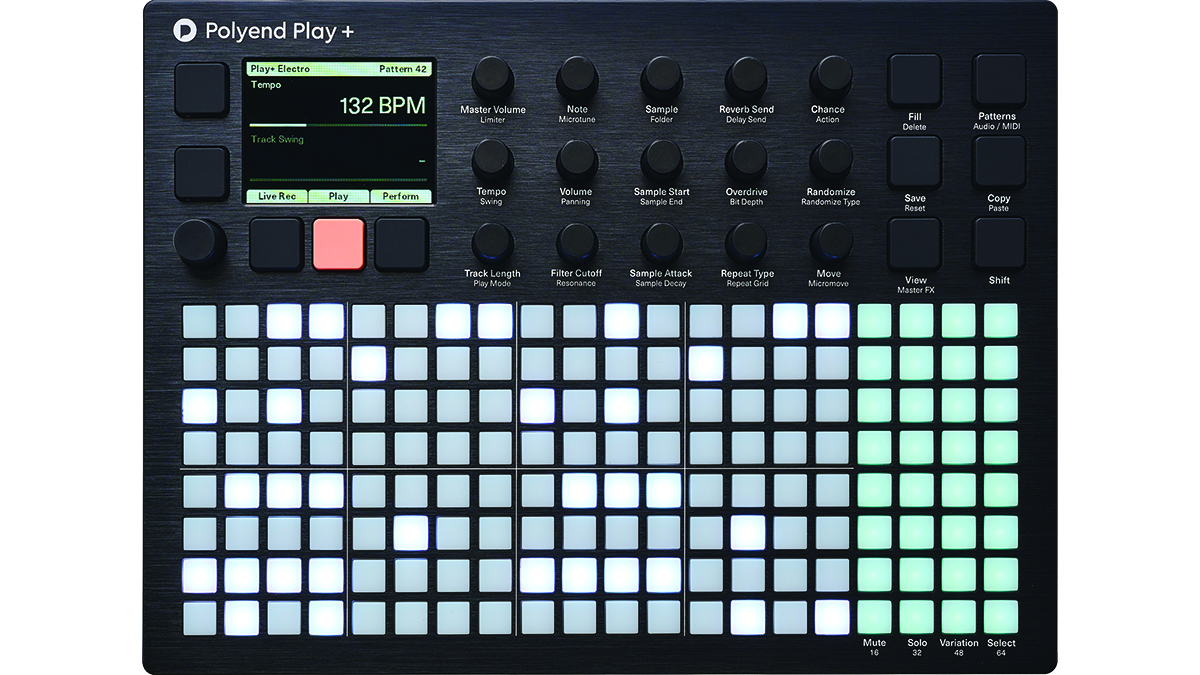
Externally this is the same as the Polyend Play, other than the ‘+’ on the logo. The top surface features a colour display, 16 knobs, 11 buttons, and 160 small backlit pads. At the rear we have mini-jack stereo audio out/headphones, mini-jack MIDI in and MIDI out, micro SD card slot, USB-C port, and a power button. The Play+ measures 28.2 x 20.7 x 3.3 cm, and weighs 1.2 kg. In construction terms, it’s fully in line with other Polyend products that we’ve tried (mainly the Tracker). Polyend has a definite ’80s/’90s hardware look going with its hardware designs – which we appreciate.

Polyend Play+: Performance and verdict
The microSD card is loaded with samples, patterns, and presets, now including stereo samples to make use of the enhanced audio features. The Play+ has a total of 16 tracks – eight for samples, and eight shared between synths and external MIDI sequencing.
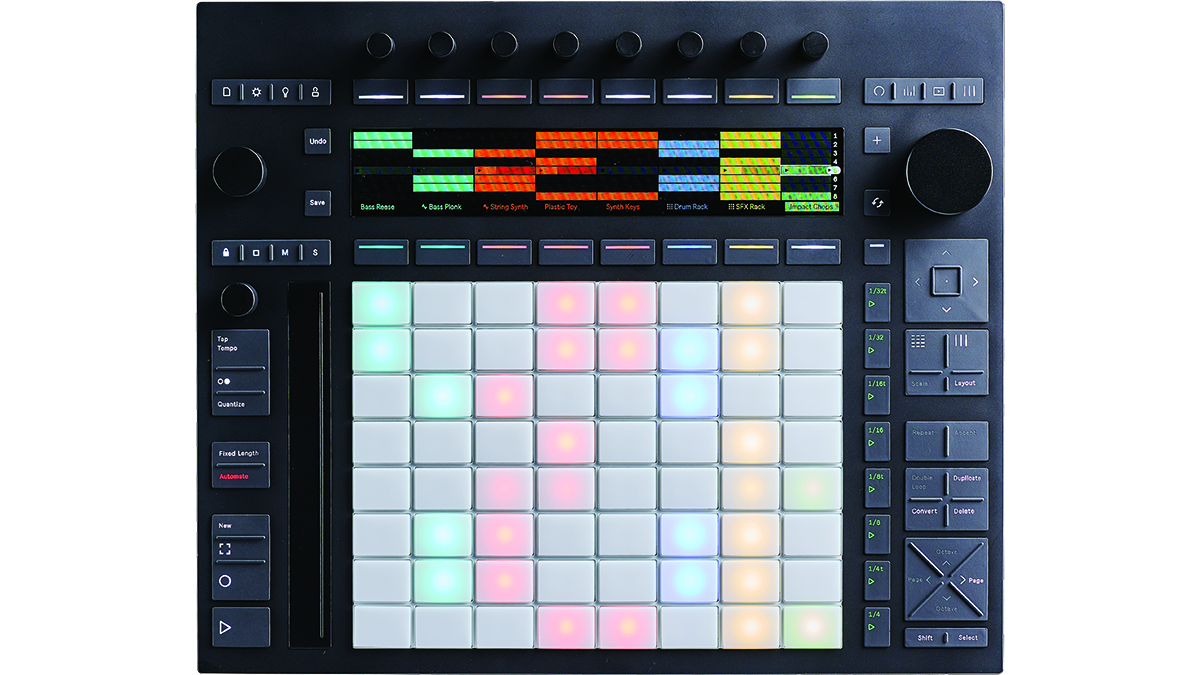
• Ableton Push 3
This is the self-contained version of the Push controller, with the ability to load Live projects created on a computer, and a set of plush MPE-compatible pads. Also functions as an audio interface, although it’s very expensive.
• Akai MPC One+
Includes touch display, SD card storage, and access to the full range of Akai samples and software instruments. Unlike the Play+, it handles the entire sampling process.
• NI Maschine+
Another ‘plus’ device, NI’s Maschine+ samples, hosts their software instruments, and like Push and the MPC, can serve double-duty as a controller for the desktop software.
We’ve covered the nuts and bolts of sampling and sequencing with the Play previously, so here we’ll focus on the synthesisers, but we’ll briefly mention that it doesn’t recognise the concept of ‘tracks’ in a way that you might be used to. Each step (or pad) can have entirely different MIDI notes, samples/synths, or other audio effects, applied to it. We really liked that each ‘track’ can be of a different length, or reversed, for full polyrhythmic madness.
Synthesis is the prominent new feature in the Play+, and there are four types available: ACD (single oscillator monophonic analogue synth style), FAT (warm analogue polyphonic synths), VAP (virtual analogue polysynth, dual oscillator, modulation matrix), and WTFM (2-operator FM synth with wavetable-based oscillators).
Each synth includes an array of factory presets, covering bass, pads, leads, noise, and so on. It has to be said, these synths actually sound better than we expected, and not at all ‘sound module-ish’, as we’ve encountered on some other manufacturers’ products. In purely subjective terms, we enjoyed deploying ACD for some suitably thick bass sounds, but all of these sounds are usable, although maybe you wouldn’t want a final project that relied on them alone. That’s where the sampling textures can come in, though.
Rather than the sounds themselves, the only limitation lies in the lack of hands-on control, with just a few macro knobs, as the Play+’s ambitions exceed the ability of the physical surface to reflect what’s going on; for example, there’s no text representing the synth parameters, and more time will be spent inside the parameters menu than you might like.
A standout is Perform mode, where pads become a grid-style effects controller
Top level settings for each synth include polyphony, pan, and gain, then below that is another patch edit menu which unlocks a full array of synth parameters including LFO, noise, timbre, filter parameters, and ADSR, and of course the results of your tweaking can be saved as new patches. We got a particular thrill using the fill command to create new synth patterns, in fact we enjoyed using fill more with synths than we did with samples. Talking of samples, a standout feature of the Play and Play+ (and indeed the Tracker) is the Perform mode, where the pads become a grid-style effects controller which non-destructively affects your sequences during jamming sessions. Sadly this is more limited when it comes to synths, and only the loop effects will apply.
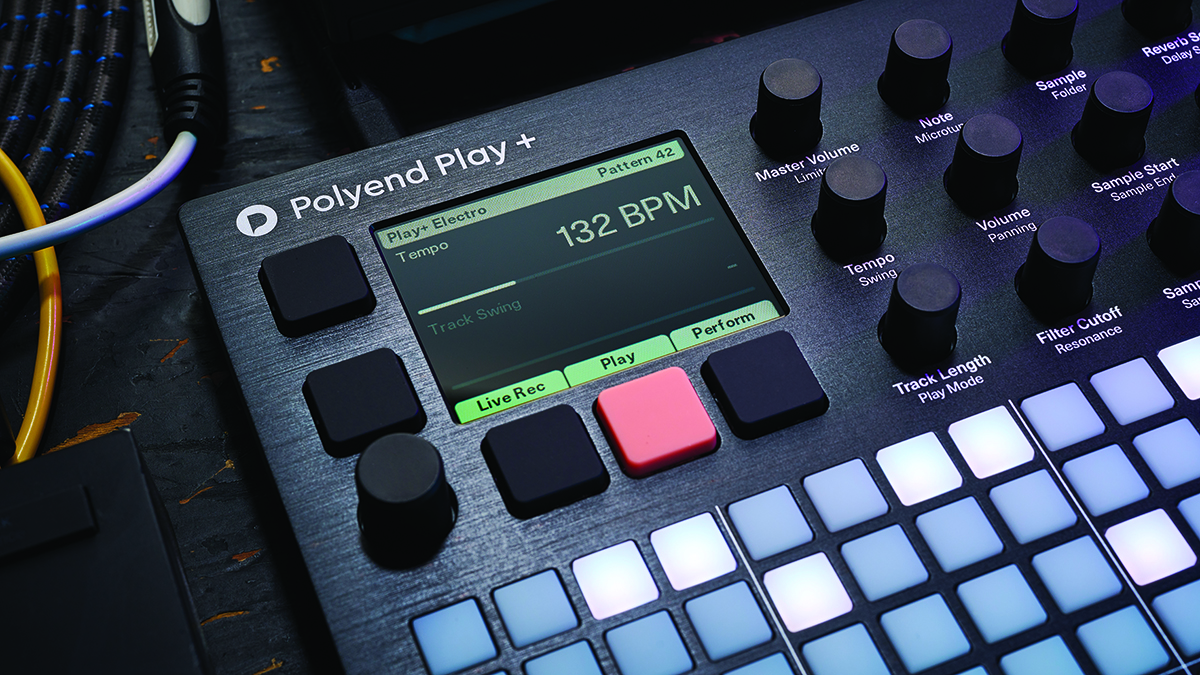
We connected the Play+ to an M3 MacBook Pro, which was also able to power it. Unlike its predecessor, the Play+ functions as an audio interface, with up to 14 stereo/28 mono channels available going to your DAW, and two-channel stereo output. We generated some random notes using Live 12’s new MIDI tools and sent them to Play+, receiving audio back in, and then recording Live’s MIDI output to the Play+. This process was a lot of fun. We also connected with similar results on an iPad Pro M1, and Logic Pro for iPad, as well as GarageBand on an iPhone 15 Pro Max, which of course now has a USB-C port. The Play+ was also successfully powered by both devices, but we wouldn’t recommend this for an important gig!
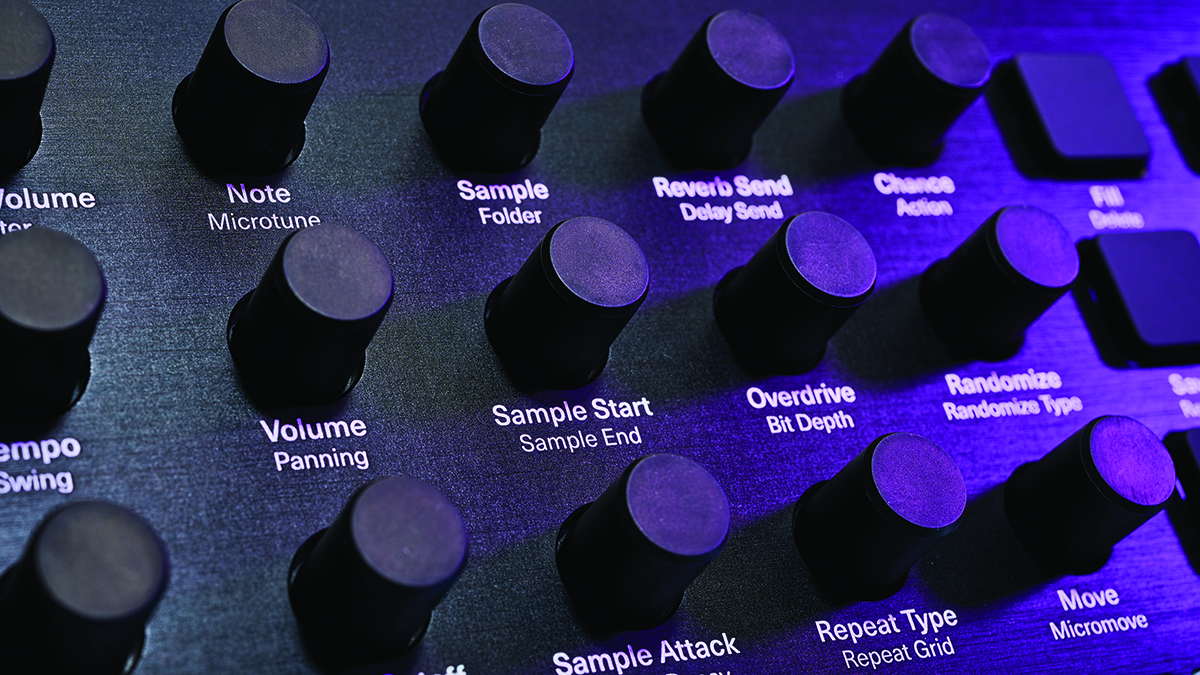
Self-contained vs integration
The Play+ has just about enough connectivity to make it work as the centrepiece for your rig, with MIDI available over USB and DIN (courtesy of the provided adapter). However, some people would like to have CV available, and we would’ve liked Ableton Link compatibility, for the ultimate ‘throw it down on the table and sync it up’ situation. To be fair, it was easy enough to get it communicating with Ableton Live over USB, with multichannel audio and MIDI. Having said all that, we really peaked fun-wise with the Play+ in standalone mode, with some headphones and a USB power pack, sitting on a sofa or visiting our local coffee shop. Samples, synths, effects, sequencing, all in one box – what more do you need?
Verdict
The Play+ synths add a new dimension to the existing sampling and sequencing workflow, and gave us very pleasant Elektron Monomachine feels, which is always a good thing. They represent a credible and very usable upgrade to a fun machine.
MusicRadar verdict: Our love affair that started with Polyend’s Tracker continues on with the Play+ and its fun, productive, creative workflow.
Polyend Play+: Hands-on demos
Polyend
loopop
Miles Away
Polyend Play+: Specifications
- KEY FEATURES: 16-track sample and synth-based groove box. Multichannel audio over USB. Physical upgrade from original version of Play is available. Four synthesiser types included: ACD for monophonic analogue, FAT for polyphonic analogue, VAP for virtual analogue, and WTFM, a 2-operator FM synth.
- CONTACT: Polyend







